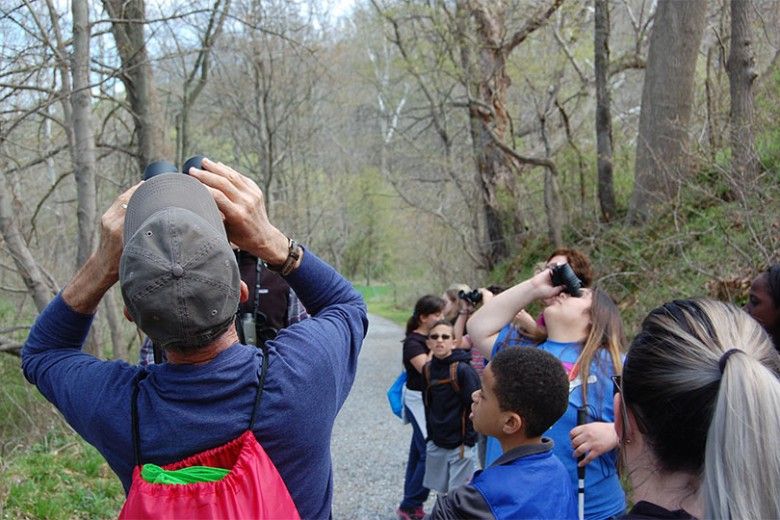A Special Kind of Birding: By Ear

Birding conjures several stereotypes. A person carrying binoculars, field guides, camera with an oversized lens and pants tucked into their socks while staring at the top of trees is probably the image that comes to mind. Regardless of the image associated with the hobby, the skill associated with identifying birds, either through sight or sound, is one that requires years to develop and hone. Spring migration brings numerous species northbound to our area and their songs, chips, and calls can overwhelm even the most ardent birder. Identifying birds aurally is a skill that requires an acute sense of hearing and a lot of time spent in the field correlating sounds with certain species. Most individuals in the birding community still rely on their binoculars and bird books to confirm identification.
However, a component of the population isn’t capable of relying on their eyesight to assist or confirm the identification of birds in our area. Individuals who are blind or visually impaired rely heavily on other heightened senses to help with routine daily tasks and making observations in the field.

For the last three years, Brandywine Conservancy staff has been fortunate to host a group of students who are blind or visually impaired from Chester County school districts to assist with a bird inventory in the Laurels Preserve. Documenting species on our preserves assists staff in making management decisions. Many individual birds have special habitat requirements and their presence or absence is indicative of the health of the land our staff manages. Using volunteers, school groups, and interpretive walks, we’ve been documenting population trends for decades.


The group of students met in late April to hike the Laurels and identify as many bird species as possible. Remembering the variety of songs and calls is difficult. To make the task easier, mnemonics are assigned to the songs. Upon meeting in the parking lot, we were greeted by a singing “sweet, sweet, sweet, I’m so sweet” song of the male Yellow Warbler. A “three eight” rang sweet and loud as a Yellow-throated Vireo sang from the Sycamore along the trail as well as a “cheeseburger cheeseburger” from a Carolina Wren. We near the ice dam, along the main trail, where a first order stream is located, and a musical song of the Louisiana Waterthrush rang though the woods. All along McCorkles Rock Road, birds are calling and singing, entertaining the walkers. The group ends at the Mary Anne Pyle covered bridge, where we take a break and have a picnic lunch.


Overall, the group could identify 43 species of birds through sound. Walking with this group puts a whole new perspective on all the bird walks that have been led previously in the Laurels Preserve, one of the Brandywine Conservancy’s protected lands and a designated Important Bird Area. At the Conservancy, we have a deep admiration for students who are willing to take advantage of the outdoor classroom. Many of our staff members believe the outdoors is where learning should begin.
The staff of the Brandywine Conservancy is grateful for the opportunity to host such a unique group of students and their aides, who receive vision support services from the Chester County Intermediate Unit. We look forward to continuing the tradition of annually counting birds by ear with this wonderful group!
If you’d like more information about this program or other opportunities for guided visits to our protected lands email Kevin Fryberger [email protected] or visit our website.
